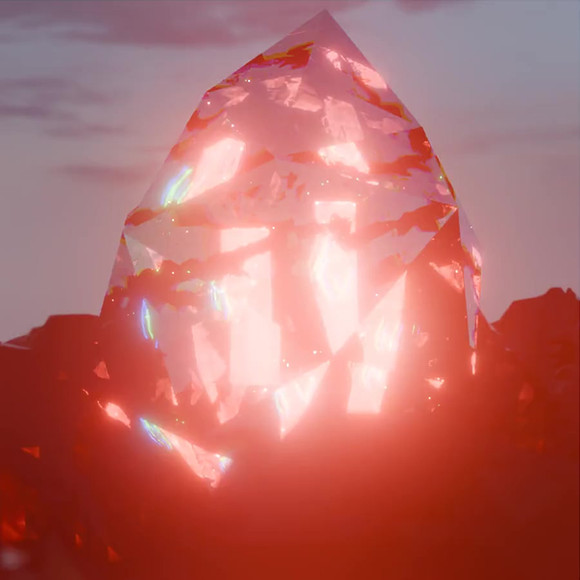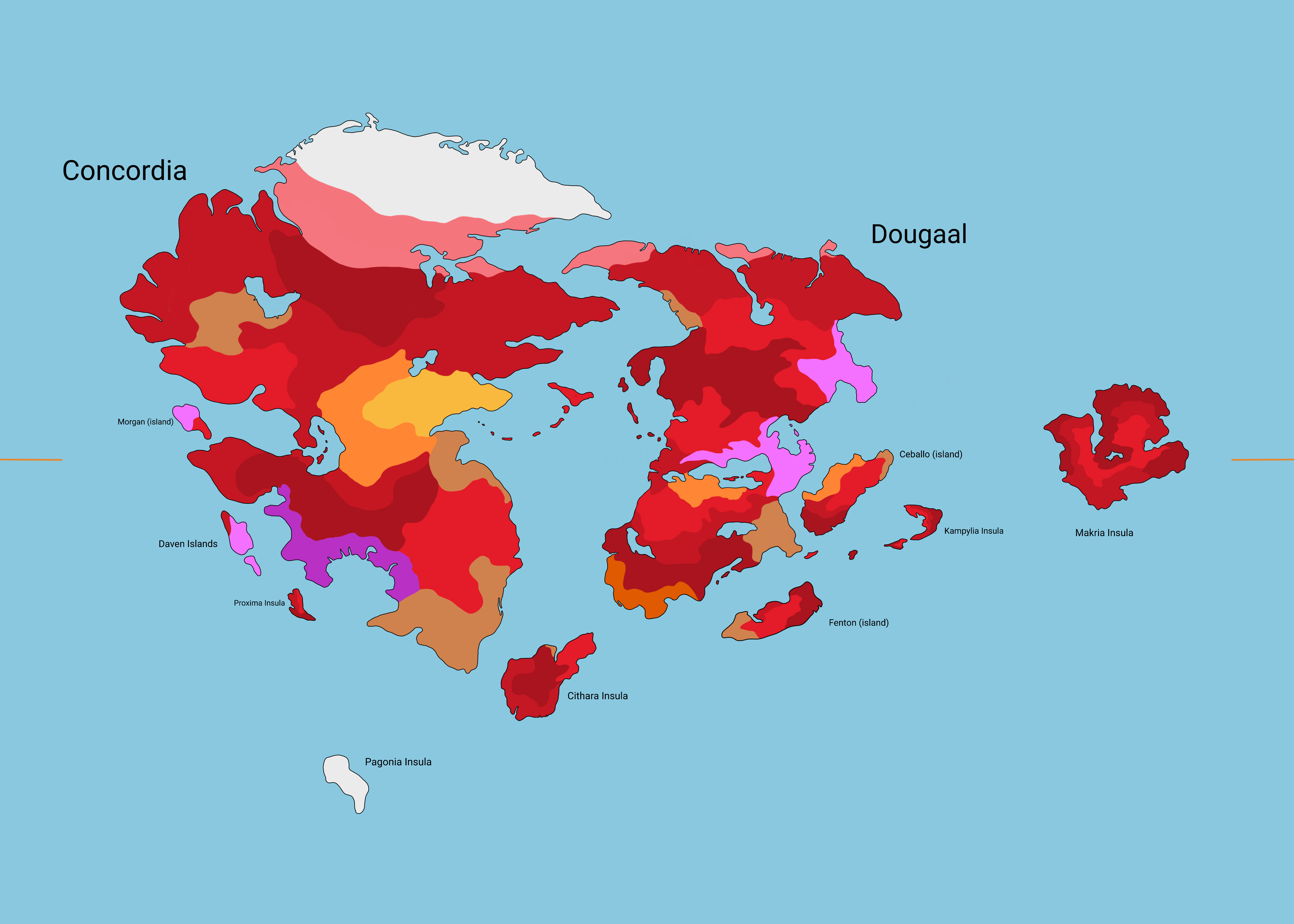HOME | DD
 MacheeMi — Introduction to TEMERE
MacheeMi — Introduction to TEMERE

#astrobiology #map #planet #worldbuilding #alienlife #alienplanet #alienworld #biology #exobiology #extraterrestrial #terrestrial #universe #mapmaking #speculativeevolution #speculativebiology
Published: 2019-11-08 00:50:44 +0000 UTC; Views: 4602; Favourites: 35; Downloads: 9
Redirect to original
Description
For a really long time I was thinking about making another speculative exobiology project, but haven't got the right motivation. I did some of this stuff in the past, also here on DA, but I lost the password to my old account and to that accounts e-mail adress





 D.
D. I warn you, that this project is still mainly in my head, but I will eventually show some interesting things from the world. Anyways:
Temere is a terrestrial planet with a diameter of 8220 kilometers or 0,64 Earths.
Its mass is 0,32 of Earths mass (I'm not completely sure, but the numbers should fit, given that the planet's density is 6,61g/cm^3) giving it just 77% of Earth's gravity, which life on Temere utilizes greatly.
It orbits 0,87 AU from its star (yet to be named), which has 90% mass of sun and the year here is 267,2 Earth days long, with Temere's day being very roughly the same as our day.
The axial tilt is 32 degrees, which makes the weather a tad more extreme during the seasons.
The planet's surface is mostly comprised of ocean with two main landmass concentrations.
Volcanic activity is present with some areas similiar to Earth's 'ring of fire'.
Temere has one primary moon Mos, larger than our Moon relative to the planet. This gave rise to tides, which are sometimes significantly larger, than on our homeworld. It has also two very small secondary ones, which have little to no effect on its tides.
It is worth noting that Temere's athmosphere is between 2 - 2,5 times denser than our own. This is an important fact, because life here has adopted to these conditions over the millions of years. Aeroplankton is in certain areas the main producent of Tamara's ecosystems and flying creatures are seen in great numbers .
Not only the sky is brimming with life, but also marine and terrestrial ecosystem are often rich in therms of biodiversity.
....that is the world. now for the project> I'm thinking about making up few ancestral lineages of primitive organisms and from them, evolve and derive every species, reflecting what I've learned about phylogenetics... I think this method could give the project a little more believability as opposed to my past projects, which consisted of random animals and bodyplans just thrown together without context... But maybe not







Let me know about any ideas or corrections, suggestions or whatever comes to your mind considering exobiology or this particular project







(c)2019 by me
Related content
Comments: 3

Ooh, this is interesting!
So, with the map... there are some ambiguities with the classification system. For instance... according to this scheme, would High Level or Oulu count as "polar" because they are just barely outside the "temperate" zone according to the most widely-used (Köppen) climate classification system? Would both Mount Mitchell and Puerto Montt count as "temperate rainy" (as both have temperate summers and large amounts of precipitation) despite the former having continental winters and the latter having very mild ones? Would Truckee be considered "mediterranean"? Are tropical areas that have very long and/or exceptionally rainy wet seasons but still have a dry season (e.g. the lowlands around Mawnysaram) considered to be "tropical wet" or "tropical dry"? And I hope you realize that "mountainous" isn't really a climate classification, just a placeholder for areas too diverse and complicated to draw...
Hmm... assuming this star is in a similar phase of its life to the Sun (having lived for ~5.99 billion years), it would have a luminosity of around 0.64 L☉. With a semi-major axis of 0.87 AU, insolation should be ~84.1% that of Earth. This means that at its tropical circles (32°) at high noon at the summer solstice, the light would be as intense as that at high noon at the summer solstice at 56.5° on Earth. Stefan–Boltzmanning it out, assuming albedo and the greenhouse effect is the same as on Earth, the absolute temperature would be 95.76% that of Earth, or 275.9 K (2.8 °C). This is quite cold (colder than the Last Glacial Maximum and comparable to the overall Cryogenian), but assuming a climate sensitivity of 3 °C/2×CO2, an Earth pre-industrial 15 °C average can be reached with ""just"" 0.00486 atm (4,860 ppm🜨) CO2... crikey, that's high (enough to start mentally impairing visiting humans), but it is realistic—correcting for density, Earth has approached that in the age of complex life, and pressure broadening will probably reduce the required quantity somewhat. Wait, due to the lower gravity requiring a higher atmospheric scale height, the required greenhouse gas concentration may produce only 77% of that pressure, so perhaps it would be only 0.00374 atm.
The planet's density is 6.61 g/cm3!? Holy shit that must have a high metallicity—especially given its size reducing the effects of gravitational compression compared to that of the Earth, most of the planets gotta be iron and other dense elements, with a thin, ore-rich mantle and crust. Was that your intention? Anyway, with such a large core, high concentration of heavy elements, and a large moon, it'd definitely have a strong enough magnetic field and enough radiogenic and tidal internal heat to maintain a thick atmosphere with a magnetosphere and volcanic activity for all that time despite its small mass.
I think the effects of a 32° axial tilt might be a bit more extreme than you realize. For instance, with our axial tilt, at the equator, the maximum solar angle is 90° at the equinoxes and 66.6° at the solstices, which is just enough that if you squint real hard and take into account Earth's eccentricity you can see a temperature pattern. On Temere, it would be 90° at the equinoxes and 58° at the solstices, the same noon summer solstice angle at 55.5° on Earth, which coupled with the constant day length would make them noticeably cooler than the equinoxes. By the time you reach the tropical circles, the noon winter solstice angle would already be below the noon summer solstice angle at the poles, something that does not occur at Earth until 43.17°. At the polar circles, the maximum angle would be 64° at the solstices, potentially allowing positively subtropical (for Earth) summers when combined with the midnight sun, along with the frigid polar winters. And on and on...
AEROPLANKTON!? ME LIKEY!!! Better see your next (draft phylogenetic) deviation on that...
"I did some of this stuff in the past, also here on DA, but I lost the password to my old account and to that account's e-mail address." Do you remember its name?
👍: 1 ⏩: 2

👍: 0 ⏩: 0

👍: 0 ⏩: 0
























